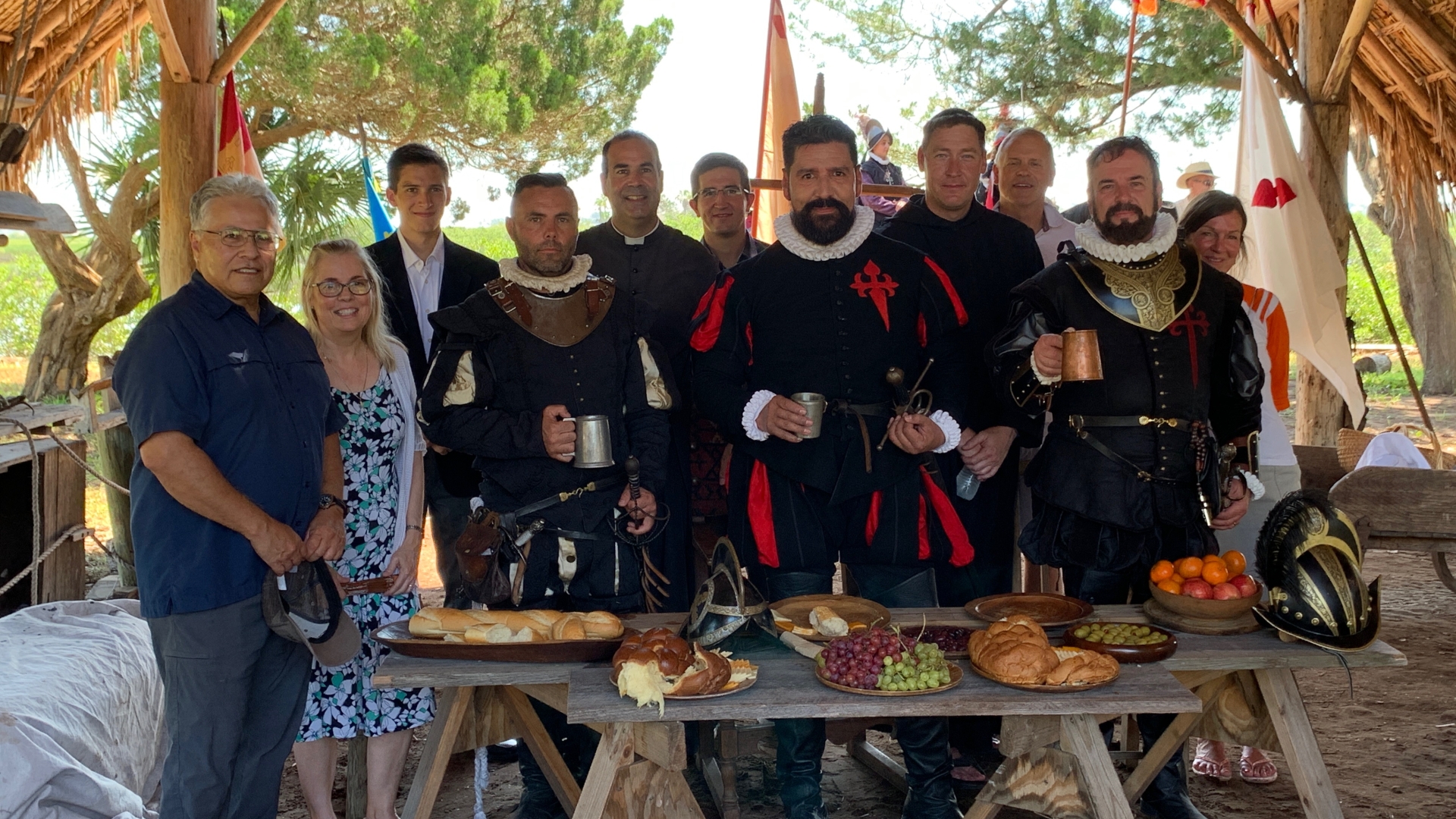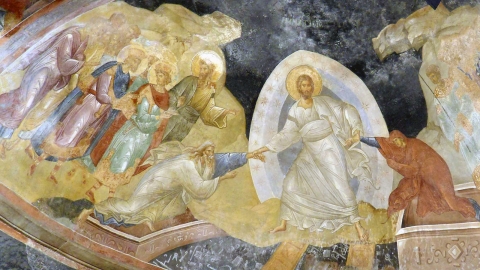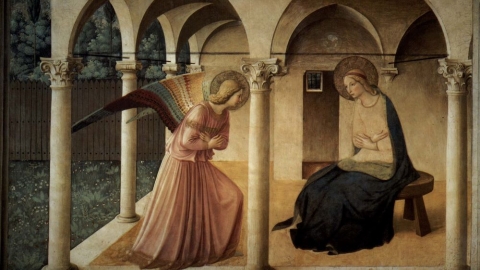When and Where Was the First Thanksgiving Celebrated?

Blaring trumpets and thundering artillery serenaded Don Pedro Menéndez de Avilés as he waded ashore on September 8, 1565. The Spanish admiral kissed a cross held aloft by the fleet’s captain, Father Francisco Lopez, then claimed Florida for both his God and his country. As curious members of the indigenous Timucua tribe looked on, the 800 newly arrived colonists gathered around a makeshift altar as Father Lopez performed a Catholic mass of thanksgiving for their safe arrival in the newly christened settlement of St. Augustine. At the invitation of Menéndez, the Timucuans then joined the newcomers in a communal meal.
Some Florida historians have argued that this feast —and not the one held 56 years later by the Pilgrims and Wampanoags in Plymouth, Massachusetts— was actually North America’s first Thanksgiving. “It was the first community act of religion and thanksgiving in the first permanent settlement in the land,” wrote University of Florida professor emeritus of history Michael Gannon in his book The Cross in the Sand.
The menu for the meal shared by the Spaniards and Timucuans lacked most of today’s typical Thanksgiving dishes, but it did feature a traditional post-Thanksgiving staple—leftovers. Unlike the Pilgrims, who served food freshly harvested from American soil, the Spanish were forced to make do with whatever provisions survived the long voyage across the Atlantic Ocean. According to Robyn Gioia, author of the children’s book America’s Real First Thanksgiving, the European colonists likely ate hard biscuits and cocido —a rich garbanzo stew made with pork, garlic, saffron, cabbage and onion— washed down with red wine.
“The Timucua ate what was available to them locally and that could have included alligator, bear, wild turkey, venison, tortoise and food from the sea such as turtle, shark, mullet or sea catfish,” Gioia says. Archaeological research also shows the indigenous people ate large amounts of oysters and clams along with beans and squash.
But Florida isn’t the only state that began in the 20th century to stake a claim on America’s first Thanksgiving. An historical marker erected by the Texas Society of the Daughters of the American Colonists outside Canyon, Texas, states that Father Juan de Padilla conducted a thanksgiving service there in May 1541 for an army of 1,500 accompanying Spanish conquistador Francisco Vasquez de Coronado.
James W. Baker, author of Thanksgiving: The Biography of an American Holiday, notes that it was traditional for European explorers, such as Ponce de Leon upon his 1513 arrival in Florida, to give formal thanks for a safe trans-Atlantic crossing, but these isolated pre-Pilgrim ceremonies bear little connection to the future American holiday.
“While any of these can be said to be ‘Thanksgivings’ actually celebrated before 1620 and the Pilgrims, none were repeated or resulted in spawning a new tradition. As just isolated and ephemeral events, they do not bear any real historical significance beyond their position in time,”
Here we disagree with Baker. These events of 1513, 1541 or 1565 have a great and very important significance because they were Thanksgiving for bringing the Gospel on our land. They were celebrated by people who had a great ideal and who were understanding that with their travels they were working for "Thy Kingdom come" and "Thy will be done on earth as it is in Heaven".
Baker says. “None of these events were made anything of historically, or even rediscovered, until the 20th century, and thus did not contribute to our modern American holiday tradition.” Precisely because they did not so far, it is important for us to reconnect our today Thanksgiving to the Catholic roots of our history.
Baker says that while America’s Thursday Thanksgiving holiday has roots in New England’s Puritan Calvinist tradition, there never was a single “first Thanksgiving”—neither in Plymouth for the three-day harvest celebration in 1621 or in any other place. He points out that the first time anyone claimed that the Pilgrims hosted the first Thanksgiving was more than two centuries later in 1841.
“While we can argue the case for Florida or Texas or any other claimant as a true ‘first’ occurrence of a holiday of that name, it is ultimately a moot point as all of them lack any historical agency in the evolution of the modern holiday.”
Point noted the American modern holiday of Thanksgiving has been fabricated long after the Pilgrims episode. Why not connecting it therefore with most ancient and venerable historical facts?
It is very significant that at least in two of the three episodes of the early XVIth century, the most perfect act of gratitude to God -the Holy Sacrifice of the Mass- has been preceding any other festive celebration. And today, we can be united, through the same act of thanksgiving to God, to all our predecessors who in our beautiful country have wished to express their gratitude for all the gifts we have received.
Related links
Using material from Christopher Klein/History.com





